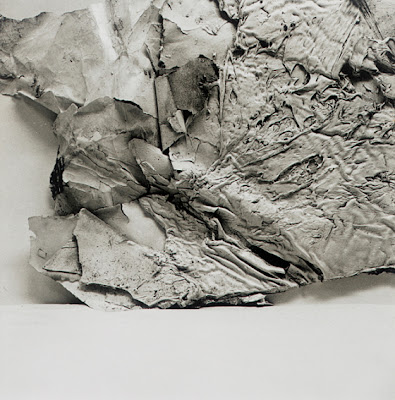"59. When I looked at her early pieces, I had a sudden feeling that, regarding visual art, I was happy to be in San Francisco and not Paris. That was 1954."
"60. DeFeo rode Abstract Expressionism in a direction that it had never been before—it was the placement of her incredible shabby daubs or exquisitely worn splotches and loose sprawling offbeat bars that was the message. She was dealing with paint as the assemblagists would deal with worn materials. She was part of a vision, of a new way of seeing. She was beat, she was elegant, she was worn, she was glimmery. DeFeo is the visionary of the assemblagists."
Tuxedo Junction (fragment)
"61. . . . DeFeo was a gambler and an alchemist. She was translating her vision into painting and gambling her spirit on the coup of her dusky materials."
photo by Jerry Burchard • 1958
"63. At one point in the late fifties, I found that DeFeo had destroyed, by cutting in half, nearly all of her tempera on pasteboard works. The destroyed stack of work was eighteen inches to two feet high.
I wish she had not done it, and I have thought about her act for thirty years."
"66. Jay DeFeo is working with spirit, contemplation, and gesture. She proves that the minute gesture in a perfect daub is as fine as a great slooping drip in Pollock's work or a color field by Rothko."
[Text excerpted from "66 things about the California assemblage movement" in Lighting The Corners (1992) by Michael McClure.]









